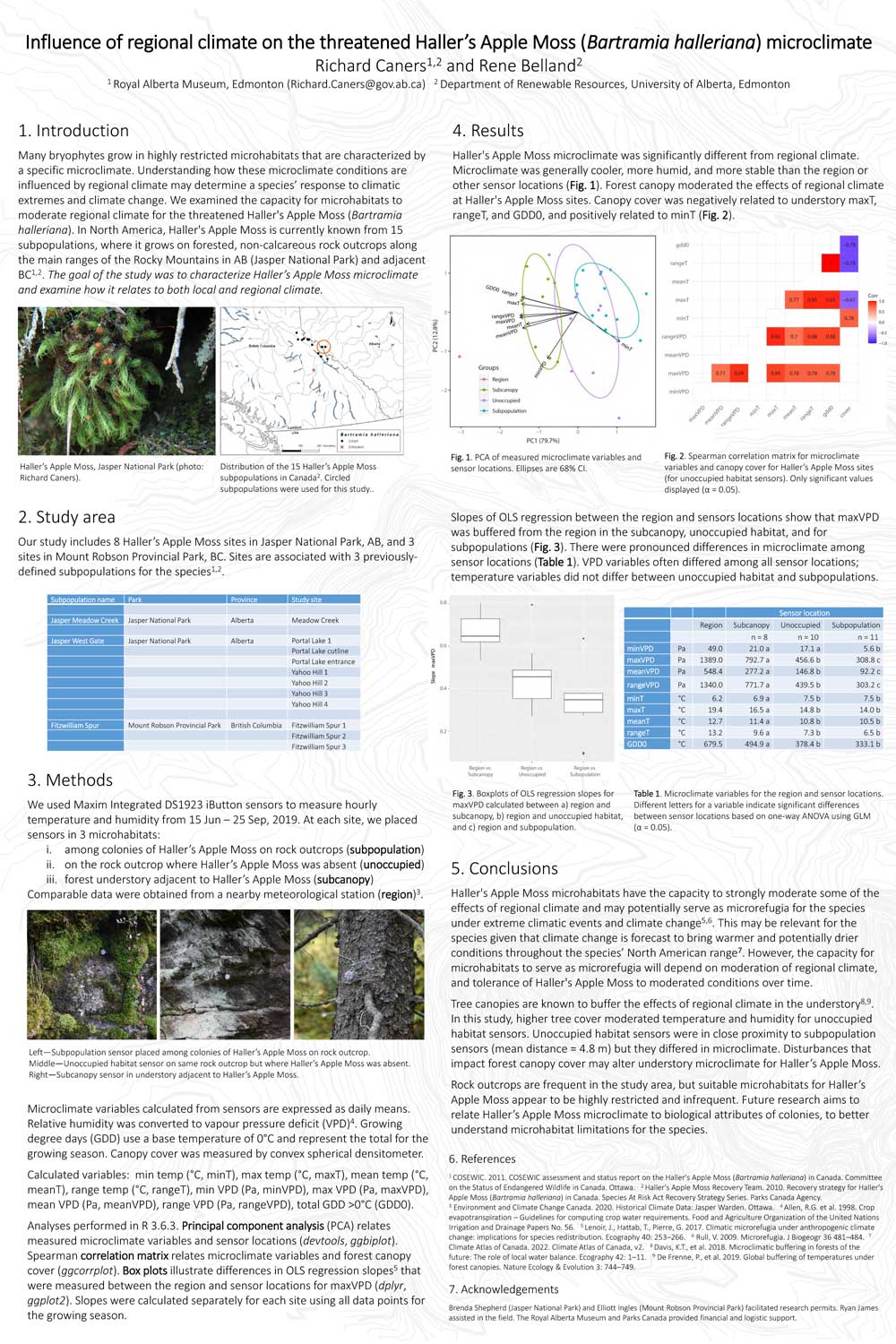
Many bryophytes grow in highly restricted microhabitats that are characterized by a specific microclimate. Understanding how these microclimatic conditions are influenced by regional climate may determine how a species responds to climatic extremes and climate change. We examined the capacity for microhabitats to moderate regional climate for the threatened Haller's Apple Moss (Bartramia halleriana). In North America, Haller's Apple Moss is found only in Canada, where it grows on forested, non-calcareous rock outcrops in the Rocky Mountains of Alberta (Jasper National Park) and adjacent British Columbia. We used hourly data logger readings over the growing season to examine microclimate (humidity and temperature) at multiple Haller's Apple Moss sites in Jasper National Park, AB, and Mount Robson Provincial Park, BC. At each site, we placed data loggers 1) among Haller's Apple Moss colonies on rock outcrops, 2) adjacent to colonies on rock outcrops where the species was absent, and 3) within the forest understory adjacent to colonies. We compared these measurements to paired readings from a regional meteorological station nearby. Microclimate among Haller's Apple Moss colonies was disconnected from the regional climate. Colonies experienced colder, more humid, and more stable microclimate than either the region or the other site measurement locations. Forest canopy cover at sites moderated the effects of regional climate on Haller's Apple Moss. Higher canopy cover was associated with significantly lower mean daily maximum temperature, temperature range, humidity range, and growing degree-days, and higher minimum temperature, in the understory. Climate change is forecast to bring warmer and drier conditions within the range of Haller's Apple Moss in Canada in upcoming decades. Haller's Apple Moss microhabitats have the capacity to strongly moderate some of the effects of regional climate and may potentially serve as refugia for the species under extreme climatic events and climate change.

